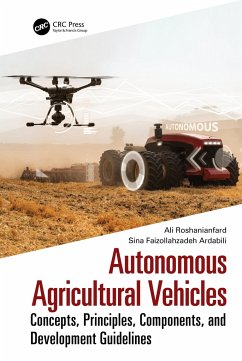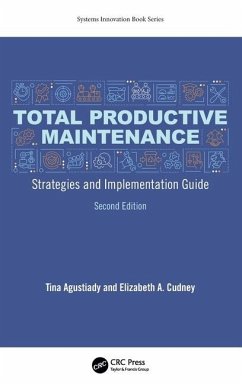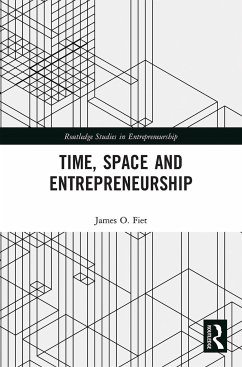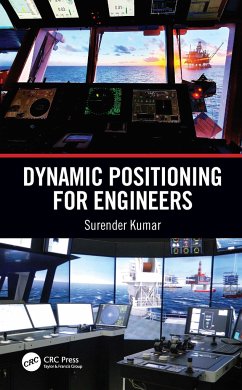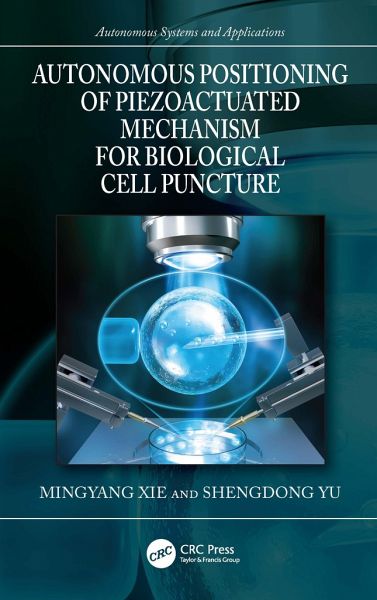
Mingyang Xie (Nanjing University of Aeronautics and C AstronauticsShengdong Yu (International Journal of Aerospace System Science and
Gebundenes Buch
Autonomous Positioning of Piezoactuated Mechanism for Biological Cell Puncture
Versandkostenfrei!
Versandfertig in 1-2 Wochen

PAYBACK Punkte
47 °P sammeln!




Autonomous Positioning of Piezoactuated Mechanism for Biological Cell Puncture gives a systematic and almost selfcontained description of the many facets of advanced design.
Dr. Mingyang Xie, Nanjing University of Aeronautics and Astronautics, College of Automation Engineering. Prof. Xie is one of the scholars in the field of micro/nano robot and micro/nano manipulation. He has published 1 academic books, 30+ academic papers, including 10+ papers in the top journals and conferences in the field of robotics, such as, IEEE/ASME Transactions on Mechatronics, IEEE Transactions on Automation Science and Engineering, IEEE Transactions on Control Systems Technology, IEEE Transactions on Biomedical Engineering, ICRA, IROS, AIM, etc.. Prof. Xie is currently the Associate Editor of the IET Electronics Letters, Designs, Guest Editor of the International Journal of Advanced Manufacturing Technology. He also serves as the workshop organizer of IEEE/RSJ International Conference on Intelligent Robots and Systems (IROS 2019), invited session chair of IEEE International Conference on Advanced Intelligent Mechatronics (AIM 2019), PC member of IEEE International Conference on Robotics and Biomimetics (Robio 2019). He is currently served as reviewer of many top journals and conferences, such as, the IEEE Transactions on Robotics, the IEEE/ASME Transactions on Mechatronics, the IEEE Transactions on Industrial Electronics, the IEEE Transactions on Neural Networks and Learning Systems, the IEEE Transactions on Circuits and Systems-I: Regular Papers, International Journal of Robust and Nonlinear Control, ICRA, IROS, CDC, ACC, AIM. He is the Senior member of IEEE. Dr. Shengdong Yu, Wenzhou Institute, University of Chinese Academy of Sciences. Prof. Shengdong Yu obtained his M.S. and Ph.D. degree from Mechanical and Electrical College of Nanjing University of Aeronautics and Astronautics. He is currently an associate professor of Electromechanical Engineering with the Wenzhou Institute, University of Chinese Academy of Sciences (WIUCAC). His current research interests include micro/nanosystems, micro/nanomechatronics, smart materials and structures, and sliding mode control theory. He has published a series of academic papers on the research of micro/nano manipulation, such as, ISA Transactions, Journal of the Franklin Institute, Bio Design and Manufacturing, IEEE Transactions on Circuits and Systems I, etc..
Produktdetails
- Autonomous Systems and Applications
- Verlag: Taylor & Francis Ltd
- Seitenzahl: 172
- Erscheinungstermin: 2. Juni 2023
- Englisch
- Abmessung: 240mm x 161mm x 14mm
- Gewicht: 380g
- ISBN-13: 9781032277202
- ISBN-10: 1032277203
- Artikelnr.: 67514987
Herstellerkennzeichnung
Libri GmbH
Europaallee 1
36244 Bad Hersfeld
gpsr@libri.de
Für dieses Produkt wurde noch keine Bewertung abgegeben. Wir würden uns sehr freuen, wenn du die erste Bewertung schreibst!
Eine Bewertung schreiben
Eine Bewertung schreiben
Andere Kunden interessierten sich für





